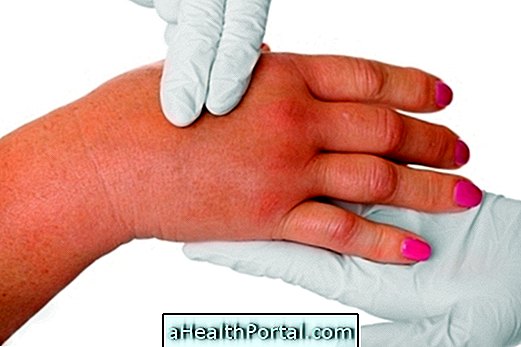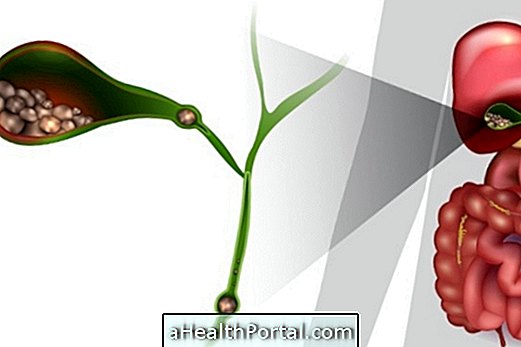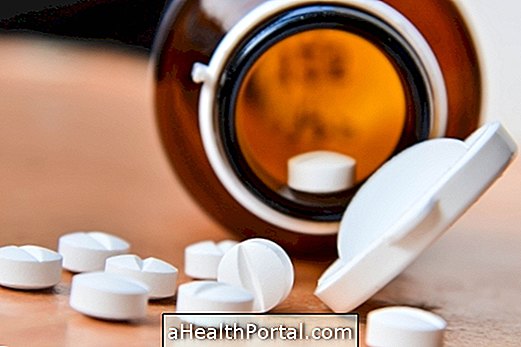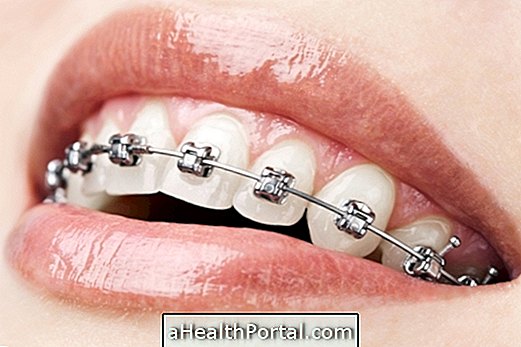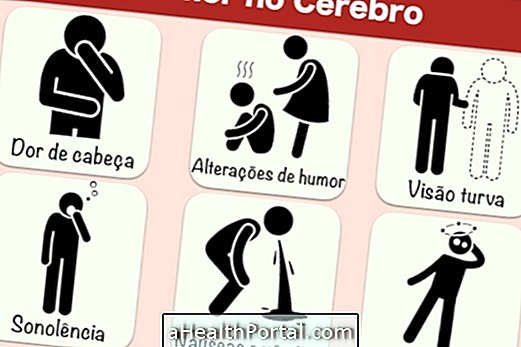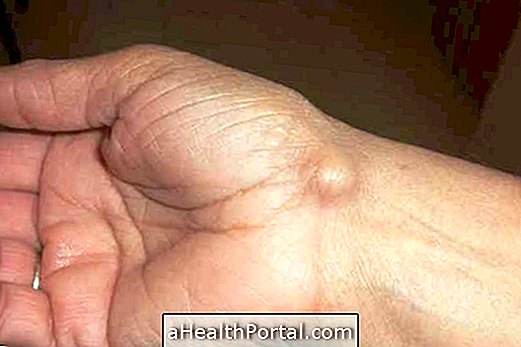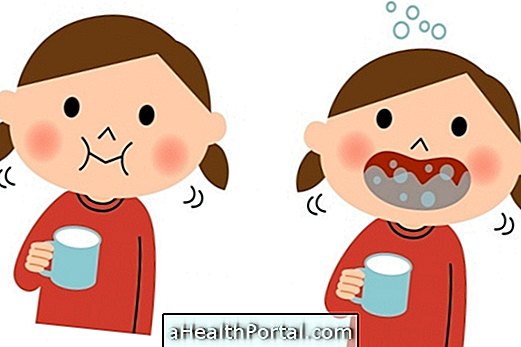Heart rate indicates the number of times the heart beats per minute and its normal value in adults ranges from 60 to 100 bpm. However, it varies with age, whether the person does any physical activity or has any heart disease.
Basically, the more effort the heart needs to make to send the blood to the body, the greater its effort and consequently the higher the heart rate of that person. And the more efficient each heart beat, the lower the heart rate, so ideally the heart rate is always lower but not so low that it does not allow the blood to reach the entire body, so there is a rate depending on the age:
- Up to 2 years old: 120 to 140 bpm,
- From 8 years to 17 years: 80 to 100 bpm,
- Sedentary Adult: 70 to 80 bpm,
- Adult who does physical activity and the elderly: 50 to 60 bpm.
Although the normal heart rate is up to 100 bpm, in a tachycardia, the heart can beat up to 400 times per minute and is at risk.
The heart rate is an important indicator of health status but see other parameters that may indicate how your health is: How to know if I am in good health.
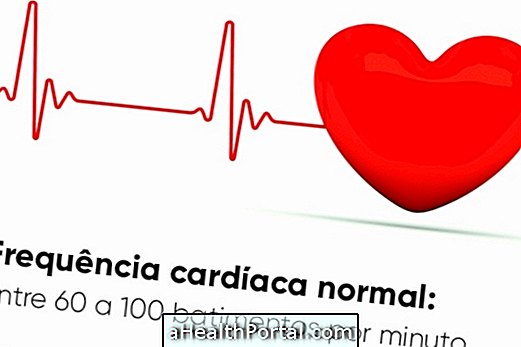
What changes your heart rate
The main factors that alter heart rate are listed below:
Above 100 bpm:
Not always the increase in heart beat is caused by some worrying situation. The heart may be beating harder or faster in day-to-day situations such as:
- Faced with strong emotions;
- Panic or anxiety attack;
- During sexual intercourse;
- When there is fever;
- During the practice of exercises;
- By making some effort;
- Due to the use of medications;
- When the pressure is high, see what to do if the pressure is high;
- Due to ingestion of large quantities of alcohol or caffeine;
- When there is any heart disease, such as heart failure or valvular heart disease, as well as other diseases such as atherosclerosis or hypertension.
When the pressure is high, above 140 x 90 mmHg, there is tachycardia and if the pressure continues to rise, there is a risk of infarction. Symptoms that may indicate that the person is having or may have a heart attack include chest or arm pain, poor digestion, dizziness, and cold sweat. If you experience these symptoms you should go to the emergency room or call an ambulance. See what the first symptoms of the infarction are.
If the person experiences this increase in heart rate more than 3 times a week, even when he is at rest, without any effort, and without any of the above, he should go to the cardiologist to do tests for the heart, identify the cause and initiate treatment if necessary.
Below 60 bpm:
A heart rate of less than 60 beats per minute may occur due to aging or just a side effect of certain medicines for the heart, for example. However, low heart rate can also indicate heart problems such as heart block or sinus node dysfunction, especially if accompanied by dizziness, tiredness, or shortness of breath. So if you have a weak heart beat, you should consult a cardiologist to do a heart examination, identify the cause, and start treatment if necessary.
Normal heart rate chart
The following table shows the normal heart rate for men at rest:
| Age | 18-25 years | 26-35 years | 36-45 years | 46-55 years | 56-65 years | +65 years |
Great | 49-55 | 49-54 | 54-59 | 58-63 | 57-61 | 56-61 |
| Good | 57-61 | 57-61 | 60-62 | 64-67 | 68-71 | 62-65 |
| Less good | 71-73 | 72-74 | 73-76 | 73-83 | 76-81 | 74-79 |
| Bad | +82 | +82 | +83 | +84 | +82 | +80 |
Already this table shows the normal heart rate for women at rest:
| Age | 18-25 years | 26-35 years | 36-45 years | 6-55 years | 56-65 years | +65 years |
Great | 54-60 | 54-59 | 54-59 | 61-65 | 60-64 | 60-64 |
Good | 61-56 | 60-64 | 62-64 | 66-69 | 65-68 | 65-68 |
Less good | 74-78 | 75-76 | 74-78 | 78-83 | 78-83 | 77-84 |
| Bad | +82 | +83 | +85 | +84 | +84 | +84 |
If the frequency is above the values shown in the table, regular exercise should be performed because this improves the heart's ability so that the heart can pump the same amount of blood with less effort, which naturally decreases the resting heart rate.
How to Measure Heart Rate
To measure, you can place the index and middle finger on the side of the neck, where you feel the heart beats and count how many pulsations you notice for 1 minute. The calculation can also be done by counting the beats up to 15 seconds and multiplying the result by 4. Another, more reliable way is to use a small device called a frequency meter that is placed on the finger, or use special clocks that measure HR. These products can be purchased at medical or sports product stores.


What is the maximum heart rate to train
The maximum heart rate varies according to the age and type of activity that the person does daily, but can be verified by performing the following mathematical calculation: 220 minus age (for men) and 226 minus age (for women).
A young adult can have a maximum beating of 90 and an athlete can have a maximum heart rate of 55, and this is also related to the physical conditioning that the individual possesses. The important thing is to know that the maximum heart rate of an individual may be different from another and this may not represent any health problem, but rather, physical conditioning.
To lose weight and at the same time burn fat you should train in a range of 60-75% of maximum heart rate, which varies according to the gender and age of the individual. See your ideal heart rate to burn fat and lose weight.
How to normalize heart rate
If the heart rate is too high, and the individual feels the heart racing, what he can do to try to normalize the beating in the heart at that moment is:
- Stand and crouch a little by placing your hands on your legs and coughing hard 5 times in a row;
- Take a deep breath and let the air out slowly through your mouth, as if you were gently extinguishing a candle;
- Count down from 20 to zero, trying to calm down.
That way the heart rate should decrease a little, but if you notice that this tachycardia, as it is called, happens frequently, it is necessary to go to the doctor to see what may be causing this increase and if any treatment is necessary.
But when a person measures their resting heart rate and thinks they might be lower, the best way to normalize is by doing regular physical activity. They can be hiking, running, water aerobics classes or any other activity that leads to physical fitness.

